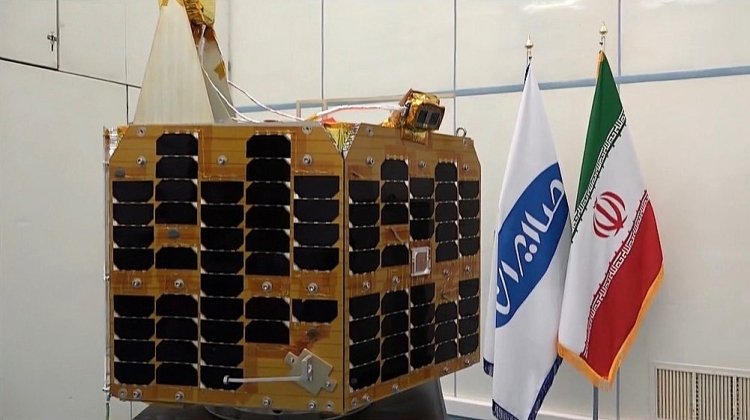Iran Launches Research Satellite Into Orbit

Iran launched a research satellite into orbit with a rocket built by the Revolutionary Guards, state media reported.
The launch comes as the United States and European countries accuse Iran of transferring ballistic missiles to Russia that would be likely used in its war with Ukraine within weeks. Iran has denied this.
The Chamran-1 satellite, which was launched into space by the Qaem-100 satellite carrier, was put into a 550-kilometer orbit and its first signals had been received, the media said, adding that the solid fuel carrier was designed and built by the Aerospace Force of the Revolutionary Guards.
The primary mission of the satellite, which weighs 60 kg, "is to test hardware and software systems for demonstrating orbital maneuvering technology in height and phase," according to state media.
In January, Iranian media reported that the Sorayya satellite had been launched into a 750 km orbit, the highest by the country so far.
The US military alleges the long-range ballistic technology used to put satellites into orbit could also allow Tehran to launch long-range weapons, possibly including nuclear warheads.
Tehran denies its satellite activities are a cover for ballistic missile development and says it has never pursued the development of nuclear weapons.
Despite sanctions imposed by Western countries in recent years, Iran has taken giant strides in the civilian space program.
The country is among the world’s top 10 nations capable of developing and launching satellites.
Earlier this year, Iran successfully sent the homegrown Mahda research satellite, along with two research cargoes, to space onboard the domestically developed Simorgh (Phoenix) satellite launch vehicle.
Earlier, the Aerospace Force of Iran’s Islamic Revolution Guards Corps successfully put the Soraya satellite into an orbit 750 kilometers above Earth in 11 minutes.















